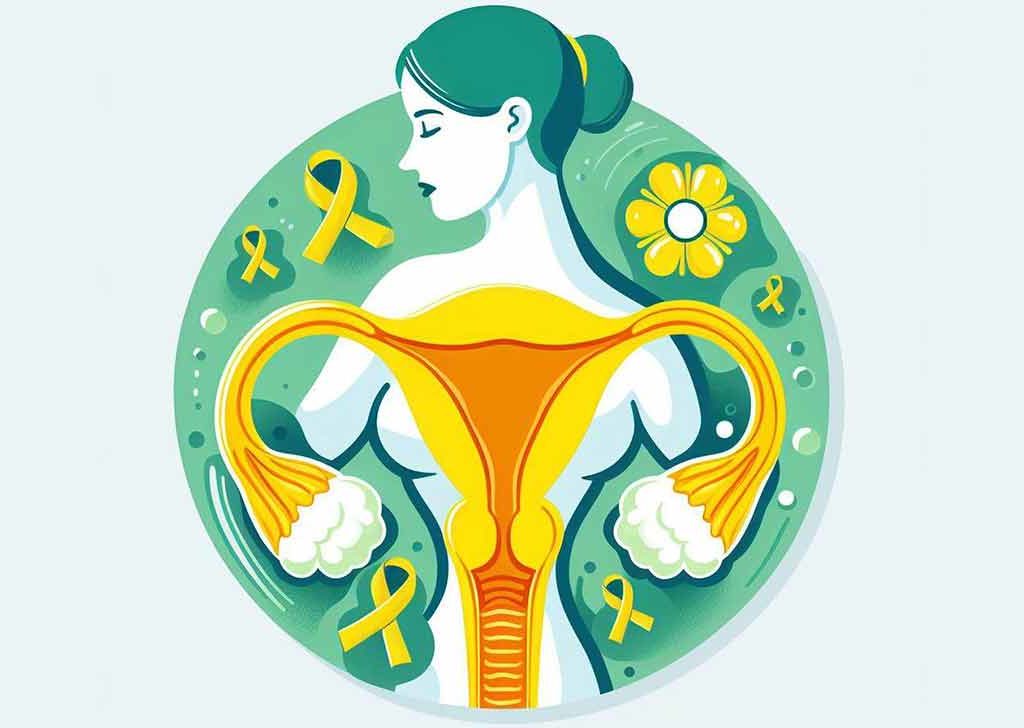Breast cancer remains one of the most common malignancies affecting women worldwide, with complex pathological mechanisms influencing its development, progression, and metastasis. The extracellular matrix (ECM) serves as more than just structural scaffolding for breast tissue; it actively participates in tumor progression through dynamic remodeling and signaling interactions. Collagen, as the predominant component of the ECM, plays a critical role in this process PubMed Central1.
Collagen is not a single entity but rather a superfamily comprising at least 28 distinct types (I-XXVIII), each with unique structural properties and tissue distribution patterns. While collagen’s primary function in normal tissues is to provide structural integrity, its altered expression, organization, and degradation in the tumor microenvironment can significantly influence breast cancer behavior Nature Communications2.
This review comprehensively examines how different collagen types contribute to breast cancer development, progression, and metastasis. We explore the molecular mechanisms by which collagen influences tumor cell behavior, the diagnostic and prognostic implications of collagen alterations, and emerging therapeutic strategies targeting collagen to improve breast cancer outcomes.

Collagen Structure and Normal Function in Breast Tissue
Basic Structure and Classification
Collagens are triple-helical proteins composed of three α-chains, characterized by a repeating sequence pattern (Gly-X-Y) where X and Y are often proline and hydroxyproline. Based on their supramolecular assembly, collagens are categorized into several groups:
- Fibrillar collagens (types I, II, III, V, XI) that form elongated fibrils
- Network-forming collagens (types IV, VIII, X) that create sheet-like structures
- Fibril-associated collagens with interrupted triple helices (FACIT), including types IX, XII, XIV, XVI, XIX
- Transmembrane collagens (types XIII, XVII, XXIII, XXV)
- Multiplexins (types XV, XVIII)
- Other specialized collagens (types VI, VII, XXVI, XXVII) PubMed Central1
Normal Function in Breast Tissue
In healthy breast tissue, collagens provide structural support and organization for epithelial and stromal cells. Type I collagen is the most abundant, forming fibrillar networks that provide tensile strength. Type IV collagen is essential for basement membrane integrity, creating a barrier between epithelial and stromal compartments. Other collagens like types III, V, and VI contribute to tissue elasticity and organization PubMed Central3.
This precise collagen architecture is vital for normal mammary gland development and function. During processes like branching morphogenesis, collagen composition and arrangement undergo controlled remodeling to facilitate tissue growth and differentiation PubMed Central4.
Collagen Alterations in Breast Cancer
Overview of ECM Remodeling in Cancer
The transformation from normal to malignant breast tissue involves substantial ECM remodeling, characterized by altered collagen deposition, degradation, crosslinking, and organization. These changes contribute to a tumor-permissive microenvironment that supports cancer cell growth, invasion, and metastasis Nature5.
Key alterations include:
- Increased collagen deposition (desmoplasia), particularly of fibrillar collagens
- Enhanced collagen crosslinking leading to increased tissue stiffness
- Reorganization of collagen fibers from a randomly oriented network to aligned, linearized structures
- Degradation of basement membrane collagens, facilitating invasion PubMed Central4
Tumor-Associated Collagen Signatures (TACS)
Specific patterns of collagen organization, termed Tumor-Associated Collagen Signatures (TACS), have been identified in breast cancer:
- TACS-1: Increased collagen deposition near tumors
- TACS-2: Collagen fibers aligned parallel to the tumor border
- TACS-3: Collagen fibers oriented perpendicular to the tumor boundary
TACS-3, characterized by straightened, aligned collagen fibers perpendicular to the tumor border, is strongly associated with poor disease-specific and disease-free survival, with hazard ratios between 3.0 and 3.9. This alignment creates “highways” that facilitate tumor cell invasion and metastasis American Journal of Pathology6.
Specific Collagen Types in Breast Cancer Development and Progression
Type I Collagen: The Predominant Driver
Type I collagen (COL1), comprising COL1A1 and COL1A2 chains, is the most abundant collagen in breast tissue and undergoes significant changes during breast cancer development:
Expression Pattern: COL1 is markedly upregulated in breast cancer stroma compared to normal tissue. High stromal density of type I collagen is associated with increased mammographic density, which is a well-established risk factor for breast cancer development PubMed Central1.
Mechanisms of Action:
- Enhanced tissue stiffness: Increased COL1 deposition and crosslinking elevates tissue stiffness, promoting malignant transformation through mechanotransduction pathways.
- Promotion of invasion: COL1 activates discoidin domain receptor 1 (DDR1), stimulating cancer cell migration and invasion.
- Metastatic support: Aligned COL1 fibers provide directional cues and physical tracks that facilitate cancer cell migration away from the primary tumor Nature Communications7.
Clinical Implications: High COL1 expression correlates with increased local invasion, lymph node metastasis, and worse overall survival in breast cancer patients Sciencedirect8.
Type III Collagen: The Tumor Suppressor
Type III collagen (COL3) demonstrates distinct functions in breast cancer compared to type I collagen:
Expression Pattern: COL3 shows a complex expression pattern in breast cancer. While overall collagen content increases, the relative amount of COL3 compared to COL1 (the COL3:COL1 ratio) is often decreased in invasive regions of tumors Nature5.
Mechanisms of Action:
- Generation of tumor-restrictive matrices: COL3 counteracts the tumor-promoting effects of COL1 by producing less dense, less aligned collagen networks that restrict cancer cell migration and invasion.
- Promotion of cancer cell apoptosis: Higher relative levels of COL3 are associated with increased apoptosis in breast cancer cells.
- Reduction of collagen fiber alignment: COL3 decreases the formation of the aligned collagen tracks that facilitate metastasis PubMed Central9.
Clinical Implications: A higher COL3:COL1 ratio in breast tumors correlates with better disease-free and progression-free survival, indicating that COL3 plays a tumor-restrictive role in breast cancer Nature5.
Type IV Collagen: Basement Membrane Integrity and Metabolism
Type IV collagen (COL4), the primary component of basement membranes, plays a complex role in breast cancer:
Expression Pattern: The COL4 family includes six α chains (α1-α6), with differential expression in breast cancer subtypes. The α5 chain (COL4A5) is preferentially expressed in luminal breast cancer and is regulated by estrogen receptor-α PubMed Central10.
Mechanisms of Action:
- Metabolic regulation: COL4A5 promotes breast cancer progression by enhancing aerobic glycolysis through the DDR1–p38 MAPK–c-Myc signaling axis.
- Basement membrane barrier function: Degradation of COL4 in the basement membrane allows cancer cells to invade surrounding tissues.
- Subtype-specific effects: COL4A5 appears especially critical for luminal breast cancer development PubMed Central10.
Clinical Implications: High levels of circulating COL4 have been reported in patients with primary breast cancer, suggesting potential utility as a biomarker. Suppression of COL4A2 significantly inhibits migration and proliferation of triple-negative breast cancer cells PubMed Central1.
Type VI Collagen: Adipocyte-Derived Promoter of Tumorigenesis
Type VI collagen (COL6) has unique associations with adipose tissue and breast cancer:
Expression Pattern: COL6 is primarily produced by adipocytes and is upregulated in breast cancer stroma, particularly at the invasive front of tumors PubMed Central3.
Mechanisms of Action:
- Growth promotion: COL6 produced by adipocytes stimulates breast cancer cell proliferation via the NG2/chondroitin sulfate proteoglycan receptor, which activates Akt and β-catenin signaling.
- Endotrophin (ETP) release: The cleaved C5 domain of COL6, known as endotrophin, acts as a chemoattractant for endothelial cells and macrophages, promoting angiogenesis and inflammation.
- Induction of epithelial-mesenchymal transition (EMT): ETP induces EMT with significant loss of E-cadherin, enhancing invasiveness PubMed Central3.
Clinical Implications: COL6 upregulation is associated with tumor progression, metastasis, and poorer prognosis in breast cancer patients, particularly in obesity-associated cancers Springer11.
Type XII Collagen: Orchestrator of Metastasis
Type XII collagen (COL12) has emerged as a significant player in breast cancer metastasis:
Expression Pattern: COL12 is predominantly secreted by cancer-associated fibroblasts (CAFs) and is significantly upregulated in breast tumors compared to healthy tissue, with increasing expression as the disease progresses Nature Communications2.
Mechanisms of Action:
- Reorganization of type I collagen: COL12 regulates collagen I fibril organization, increasing collagen bundle width and altering the architecture of the extracellular matrix.
- Enhancement of tissue stiffness: Higher COL12 expression correlates with increased tumor stiffness, which promotes cancer cell invasion.
- Facilitation of metastasis: By modifying the ECM architecture, COL12 creates conditions favorable for cancer cell dissemination Nature Communications2.
Clinical Implications: High COL12 expression in primary breast tumors is significantly associated with poor overall survival and progression-free survival. It serves as a strong predictor for disease progression, especially in early-stage (I and II) breast cancer, independent of other clinical risk factors Nature Communications2.
Type XIII Collagen: Membrane-Associated Promoter of Metastasis
Type XIII collagen (COL13) represents a unique transmembrane collagen type with specific roles in breast cancer:
Expression Pattern: COL13 expression is significantly higher in human breast cancer tissue compared with normal mammary gland, with increased mRNA levels correlating with shorter distant recurrence-free survival PubMed12.
Mechanisms of Action:
- Promotion of invasive growth: COL13 enhances invasive tumor growth in 3D culture models.
- Enhancement of cancer stemness: It increases cancer cell stemness, potentially expanding the population of cells with metastatic capacity.
- Induction of anoikis resistance: COL13 allows cancer cells to survive detachment from the ECM, facilitating their survival during dissemination.
- Activation of integrin α1: This activation is crucial for COL13-induced invasion and mammosphere formation.
- Stimulation of TGF-β signaling: COL13 enhances TGF-β-induced Smad phosphorylation, promoting processes like EMT PubMed12.
Clinical Implications: Silencing COL13 in metastatic breast cancer cell lines significantly reduces lung colonization and metastasis in experimental models, suggesting potential therapeutic applications PubMed13.
Molecular Mechanisms of Collagen-Mediated Effects in Breast Cancer
Alterations in Mechanical Properties
The increased deposition and crosslinking of collagens, particularly type I, elevate tissue stiffness, which triggers mechanosensing pathways in cancer cells:
- Integrin activation: Increased matrix stiffness enhances integrin clustering and activation, stimulating focal adhesion kinase (FAK) and subsequent mitogenic signaling.
- YAP/TAZ mechanotransduction: Stiff collagen matrices promote nuclear localization of YAP/TAZ transcription factors, driving proliferation and invasion.
- Cytoskeletal tension: Enhanced ECM rigidity increases Rho/ROCK-mediated actomyosin contractility, facilitating cell migration and invasion Nature Communications7.
Receptor-Mediated Signaling
Collagens interact with several cell surface receptors to activate downstream signaling:
- Discoidin Domain Receptors (DDRs): Collagen binding to DDR1 and DDR2 triggers tyrosine kinase activity, promoting invasion and migration.
- In luminal breast cancer, type IV collagen α5 activates DDR1–p38 MAPK–c-Myc signaling to drive glycolysis and tumor progression PubMed Central10.
- Type I collagen activates DDR1 in breast cancer cells, promoting stemness-like signaling and metastasis Nature Communications7.
- Integrins: Various collagen types bind to integrins (particularly α1β1, α2β1, α10β1, and α11β1), activating pathways related to survival, proliferation, and migration.
- Type XIII collagen activates integrin α1, which is essential for invasion and mammosphere formation PubMed12.
- Cell surface proteoglycans: Interactions with proteoglycans like NG2 mediate collagen effects on cancer cells.
- Type VI collagen promotes cancer cell proliferation via the NG2/chondroitin sulfate proteoglycan receptor, activating Akt and β-catenin pathways PubMed Central3.
Influence on Tumor Microenvironment
Collagens modulate the broader tumor microenvironment in several ways:
- Immune cell infiltration and function: Dense collagen matrices can exclude immune cells or alter their phenotypes, contributing to immunosuppression.
- Angiogenesis promotion: Collagens and their fragments serve as scaffolds and signaling molecules for endothelial cells, promoting tumor vascularization.
- Cancer-associated fibroblast (CAF) activation: Collagen-rich environments stimulate fibroblast activation, creating a feed-forward loop of increased collagen production PubMed Central1.
Epithelial-to-Mesenchymal Transition (EMT)
Several collagen types promote EMT, a process central to invasion and metastasis:
- Type VI collagen-derived endotrophin induces EMT with significant loss of E-cadherin PubMed Central3.
- Type XIII collagen enhances TGF-β signaling, a major driver of EMT PubMed12.
- Type I collagen activates EMT-related transcription factors through integrin and DDR signaling Nature Communications7.
Collagen Degradation and Metastasis
Matrix metalloproteinases (MMPs) and other proteases degrade collagen to facilitate invasion:
- MMP-2 and MMP-9 specifically degrade type IV collagen in the basement membrane, enabling cancer cells to breach this barrier.
- MMP-1, MMP-8, and MMP-13 target fibrillar collagens, creating invasion paths.
- Collagen degradation products can act as chemotactic factors for cancer cells and immune cells, further promoting metastasis Nature14.
Diagnostic and Prognostic Applications
Collagen as Imaging Biomarkers
Advanced imaging techniques can visualize collagen alterations for diagnostic and prognostic purposes:
- Second Harmonic Generation (SHG) microscopy: This label-free imaging technique specifically visualizes fibrillar collagens, enabling assessment of TACS and other architectural changes.
- SHG imaging can identify TACS-3 patterns, which strongly correlate with poor outcomes American Journal of Pathology6.
- Photoacoustic Imaging: Emerging techniques like photoacoustic spectral analysis can detect collagen in breast tissue non-invasively.
- Machine learning-enhanced photoacoustic imaging shows promise for distinguishing collagen signatures in different breast cancer subtypes PubMed15.
- Multiphoton Microscopy: Enables detailed visualization of collagen fiber organization in tissue samples without additional staining Breast Cancer Research16.
Collagen as Prognostic Markers
Specific collagen patterns and ratios offer prognostic value:
- COL3:COL1 ratio: A higher ratio correlates with improved disease-free and progression-free survival Nature5.
- High COL12 expression: Associated with poor overall survival and increased metastasis risk Nature Communications2.
- TACS-3 pattern: Predictive of poor disease-specific and disease-free survival with hazard ratios between 3.0 and 3.9 American Journal of Pathology6.
- Circulating collagen markers: Fragments of collagens in blood may serve as liquid biopsy markers for breast cancer detection and monitoring PubMed Central17.
Therapeutic Strategies Targeting Collagen
Inhibition of Collagen Biosynthesis and Crosslinking
Several approaches target collagen production and stabilization:
- Inhibition of collagen prolyl hydroxylases: These enzymes are essential for collagen triple helix stability.
- Knockdown of prolyl hydroxylases reduces collagen deposition in primary breast tumors and prevents metastasis Translational Medicine18.
- Lysyl oxidase (LOX) inhibition: LOX and LOX-like enzymes catalyze collagen crosslinking.
- LOX inhibitors like BAPN or anti-LOXL2 antibodies can reduce collagen crosslinking and matrix stiffness PubMed Central19.
- Repurposing of antifibrotic drugs: Agents like halofuginone, pirfenidone, and losartan may reduce collagen deposition in tumors Nature20.
Collagen Degradation Strategies
Approaches to remodel dense collagen networks include:
- Collagenase treatments: Direct application of collagenase or collagenase-loaded nanoparticles can degrade excess collagen.
- Local delivery of collagenase improves drug penetration into tumors and enhances immune cell infiltration PubMed Central19.
- Induction of endogenous matrix-degrading enzymes: Strategies to upregulate MMPs specifically within the tumor microenvironment Frontiers21.
Targeting Collagen-Producing Cells
Cancer-associated fibroblasts (CAFs) are the primary source of most collagen types:
- CAF depletion strategies: Targeting fibroblast activation protein (FAP) with CAR-T cells or other approaches to reduce the cellular source of excessive collagen PubMed Central19.
- CAF reprogramming: Converting pro-tumorigenic CAFs to a more normal phenotype to normalize collagen production ScienceDirect22.
Collagen-Binding Drug Delivery Systems
Leveraging collagen’s abundance in tumors for targeted therapy:
- Collagen-binding domains (CBDs): Engineering antibodies, cytokines, or drugs with CBDs enhances tumor localization and retention.
- CBD-conjugated cytokines like IL-2 or IL-12 show improved efficacy and reduced toxicity Frontiers21.
- Collagen-binding fusion proteins: Recombinant therapeutic proteins fused to collagen-binding peptides show enhanced tumor accumulation Frontiers21.
Type-Specific Collagen Targeting
Strategies targeting specific collagen types show promise:
- Type III collagen supplementation: Given COL3’s tumor-restrictive role, strategies to increase COL3 in the tumor microenvironment may be beneficial.
- Col3-enriched hydrogels have shown reduced tumor growth and metastasis in preclinical models Nature5.
- Targeting type XII collagen: As COL12 is associated with poor outcomes, specifically inhibiting COL12 production or function may reduce metastasis Nature Communications2.
- Inhibiting type XIII collagen: Silencing COL13 in breast cancer models reduced metastasis, suggesting therapeutic potential PubMed12.
Future Directions and Challenges
Integration of Collagen Markers into Clinical Practice
Several developments could enhance clinical applications:
- Standardization of collagen imaging and quantification methods for routine clinical use.
- Development of accessible, non-invasive techniques to assess collagen architecture in patients.
- Integration of collagen-based prognostic markers with conventional clinicopathological parameters American Journal of Pathology6.
Overcoming Challenges in Collagen-Targeted Therapies
Key challenges include:
- Specificity: Ensuring that collagen-targeting strategies affect only tumor-associated collagens while sparing normal tissue function.
- Delivery issues: Effectively delivering therapeutic agents into dense collagen matrices.
- Combination approaches: Determining optimal combinations of collagen-targeting therapies with conventional treatments PubMed Central19.
Emerging Areas of Research
Promising research directions include:
- Single-cell analysis of collagen-producing cells to identify specific targets for intervention.
- Development of subtype-specific collagen-targeting approaches, recognizing the distinct collagen profiles of different breast cancer subtypes.
- Exploration of collagen fragments as circulating biomarkers for early detection and disease monitoring PubMed Central17.
Conclusion
The relationship between collagen and breast cancer is complex and multifaceted. Rather than a single collagen type “causing” breast cancer, various collagens contribute to or protect against breast cancer development, progression, and metastasis through distinct mechanisms.
Type I collagen’s increased deposition and alignment creates a tumor-permissive environment supporting invasion. Type III collagen counteracts these effects, generating a tumor-restrictive matrix. Type IV collagen’s integrity in the basement membrane is crucial for preventing invasion, while its α5 chain specifically promotes luminal breast cancer progression through metabolic reprogramming. Types VI, XII, and XIII each contribute to tumor progression through distinct mechanisms involving ECM remodeling, angiogenesis, invasion, and metastasis.
Understanding these collagen-specific roles offers new opportunities for diagnosis, prognosis, and targeted therapy in breast cancer. Future research will likely focus on developing more precise, collagen type-specific interventions that normalize the tumor microenvironment without disrupting essential physiological functions.
As we continue to unravel the complex “collagen code” in breast cancer, we move closer to leveraging this knowledge for improved patient outcomes through enhanced diagnostic capabilities and novel therapeutic approaches.
References:
- https://pmc.ncbi.nlm.nih.gov/articles/PMC11073151/
- https://www.nature.com/articles/s41467-022-32255-7
- https://pmc.ncbi.nlm.nih.gov/articles/PMC4121998/
- https://pmc.ncbi.nlm.nih.gov/articles/PMC9502421/
- https://www.nature.com/articles/s41523-024-00690-y
- http://ajp.amjpathol.org/
- https://www.nature.com/articles/s41467-020-18794-x
- https://www.sciencedirect.com/science/article/pii/S1526820924000533
- https://pmc.ncbi.nlm.nih.gov/articles/PMC10120781/
- https://pmc.ncbi.nlm.nih.gov/articles/PMC10077331/
- https://www.science.org/doi/10.1126/sciadv.abc3175
- https://pmc.ncbi.nlm.nih.gov/articles/pmid/30285809/
- https://www.labmedica.com/bioresearch/articles/294775381/elevated-collagen-xiii-levels-linked-to-breast-cancer-metastasis.html
- https://www.nature.com/articles/s41598-024-51945-4
- https://pmc.ncbi.nlm.nih.gov/articles/PMC11700697/
- https://breast-cancer-research.biomedcentral.com/articles/10.1186/s13058-020-01282-x
- https://pmc.ncbi.nlm.nih.gov/articles/PMC9604126/
- https://translational-medicine.biomedcentral.com/articles/10.1186/s12967-024-05199-3
- https://pmc.ncbi.nlm.nih.gov/articles/PMC9563908/
- https://www.nature.com/articles/s41392-021-00544-0
- https://www.frontiersin.org/journals/oncology/articles/10.3389/fonc.2023.1225483/full
- https://www.sciencedirect.com/science/article/pii/S2949713224000879



